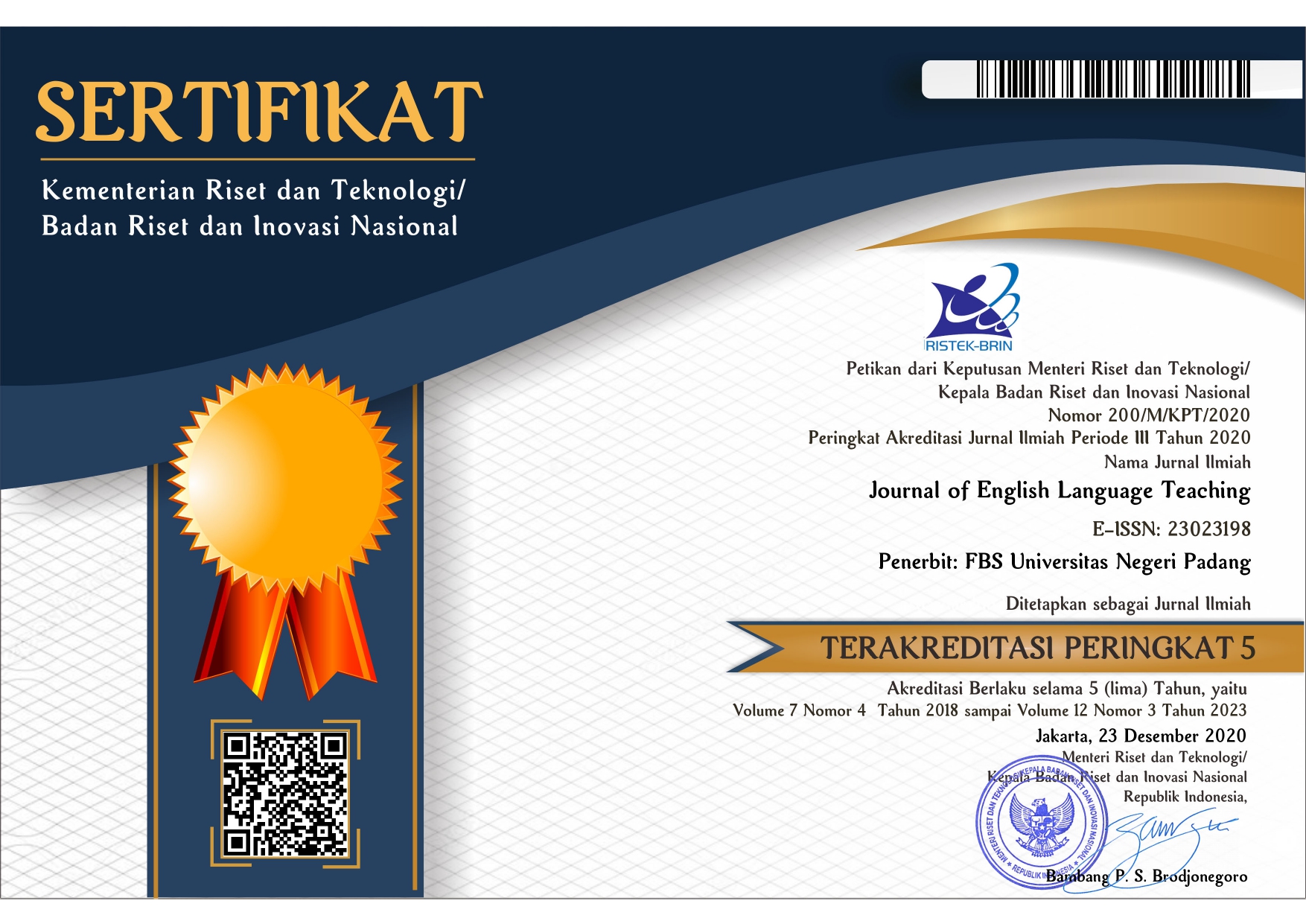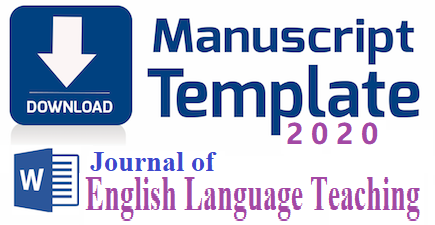English Students' Ability in Using Lexical Collocations Viewed in Their Speaking Performances: A Case at English Department FBS UNP
 ), Hermawati Syarif(2), Ratmanida Ratmanida(3),
), Hermawati Syarif(2), Ratmanida Ratmanida(3), (1) UNIVERSITAS NEGERI PADANG
(2) English Department Faculty of Languages and Arts State University of Padang
(3) English Department Faculty of Languages and Arts State University of Padang
 Corresponding Author
Corresponding Author
Copyright (c) 2018 Journal of English Language Teaching
DOI : https://doi.org/10.24036/jelt.v7i1.8949
Full Text:
 Language : en
Language : en
Abstract
Abstract
This research was a descriptive quantitavie research about English students’ ability in using lexical collocations viewed intheirspeaking performances. The uses of lexical collocations has been concerned as the 2013 batch English students had been practicing English at classes they had taken and at schools they had taught their temporary students. Lexical collocations indicated natural English which knowledge of it is necessary to gain as they are going to teach their students in the future. 18 students who had done PLK activity were involved in speaking test and interviews. The lexical collocations found in students sentences were analyzed and the types were classified to see the correct uses or collocation problems. It was found that the students’ ability in using lexical collocations was poor. All types of lexical collocations were used with different proportions with Verb and adjective and Adjective and Noun as the most frequent types of lexical collocations used. The problems were frequently of Verb and Noun and Adjective and Noun types. The causes of the problems were the limited knowledge of lexical collocations, the ignorance of the use of lexical collocations, and the use of direct translation from L1 to L2. It is concluded the more lexical collocations used, the more possible problems to occur.
Keywords
References
Benson, M., Benson, E. & Ilson, R. 1986. The BBI combinatory dictionary of English: A guide to word combinations. Amsterdam/Philadelphia: John Benjamins Publishing
Company. 3 rd Edition,(2009).
Biskri, Yamina. 2012. The Effect of Lexical Collocation Awareness-Raising On EFL Students’ Oral Proficiency Case study: First Year LMD Students, Department of English, University of Guelma. Unpublished Dissertation. Badji Mokhtar University of Annaba
Brown, Y. & Yule, G. 1993. Analysis Discourse. Cambridge: Cmabridge University Press.
Brown and Abeywickrama. 2010. Language Assessment: Principles and Classroom Practices. USA: Longman.
Cameron, Lynne. 2001. Teaching Languages to Young Learners. Cambridge: Cambridge University Press.
Hamdi, Amri Isyam, and Fitrawati. 2013. An Analysis of The Use of Collocations in Students’ Writing. Journal of English Language Teaching Vol 1, No 2, Seri E
Louma, Sari. 2004. Cambridge language Assessments Series: Assessing Speaking. Cambridge: Cambridge University Press.
McCarthy, Michael and Felicity O’Dell. 2008. English Collocations in Use. Cambridge: Cambridge University Presss.
Mongkolchai, Angkana. 2008. A Study of University Students’Ability in Using English Collocations. Unpublished Thesis Bangkok: Srinakharinwirot University.
Nesselhauf, N. 2003. The Use of collocations by Advanced Learners of English and Some Implications for Teaching. Applied Linguistics, 24(2), 223-242.
...... 2005. Collocations in a Learner Corpus. Amsterdam: John Benjamins Publishing Company.
Runcia, Noira. 2001. Oxford Collocation Dictionary. Oxford: Oxford University Press.
Shammas, N. A. 2013. Collocation in English: Comprehension and Use by MA Students at Arab Universities. International Journal of Humanities and Social Science, Vol3 No.9, May 2013.
Slocum, T. A. 1999. Thematic Cartography and Visualization. New Jersey: Prentice Hall
Syarif, Hermawati. 2014. Factor Cusing Indonesian Grammatical Interferences on English Use: A Case of Undergraduate Students’ Expository Writing in Padang, Indonesia. ISBN : 978-602-17017-3-7
Thornbury, Scoot. 2002. How to teach vocabulary. Malaysia: Longman
Ur. Penny. 2000. A.Course in Language Teaching. United Kingdom city: the University Press, Cambridge
Yalmiadi, Jufrizal and Hamzah. 2013. Student’s Ability in Using Lexical Collocations in Descriptive Writing at the English Department of Padang State Polytechnic. Unpublished Thesis. State University of Padang.
...... 2013. Student’s Ability in Using Lexical Collocations in Descriptive Writing at the English Department of Padang State Polytechnic. Journal English Language Teaching (ELT) Volume 1 No 1. 13-23.
Yule, George. 2014. The Study of language (fifth edition). Cambridge: Cambridge University Press.
Zughoul, M. R. (1991). Lexical choice: towards writing problematic word lists. IRAL: International Review of Applied Linguistics in Language Teaching,
 Article Metrics
Article Metrics
 Abstract Views : 677 times
Abstract Views : 677 times
 PDF Downloaded : 113 times
PDF Downloaded : 113 times
Refbacks
- There are currently no refbacks.
Copyright (c) 2018 Journal of English Language Teaching

This work is licensed under a Creative Commons Attribution-NonCommercial-NoDerivatives 4.0 International License.
















